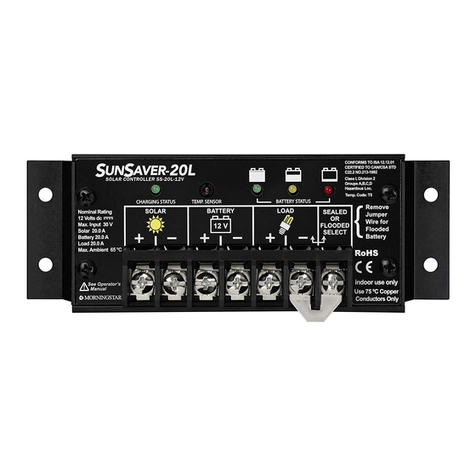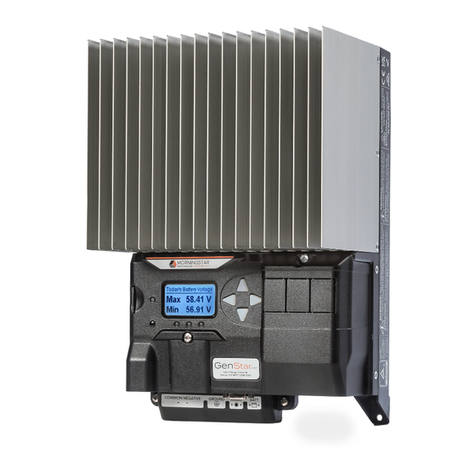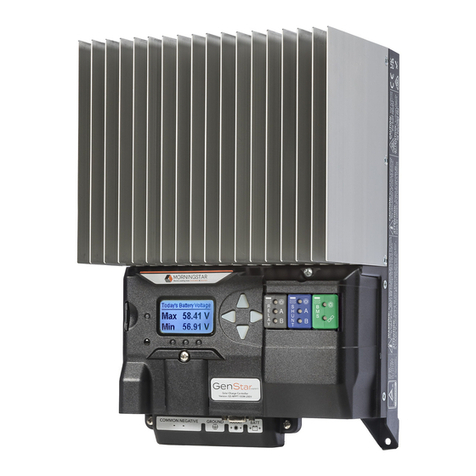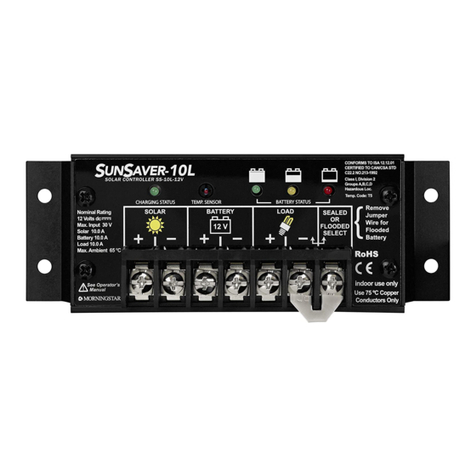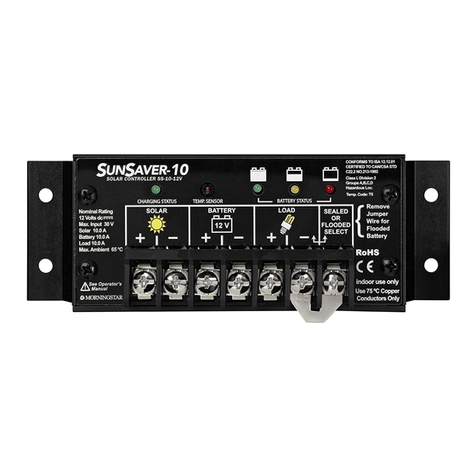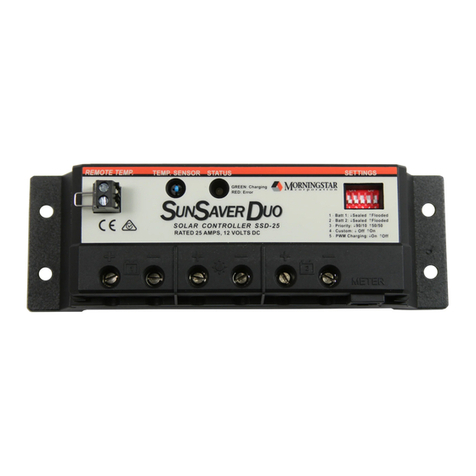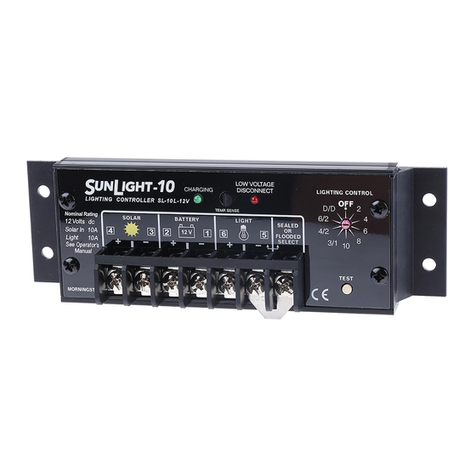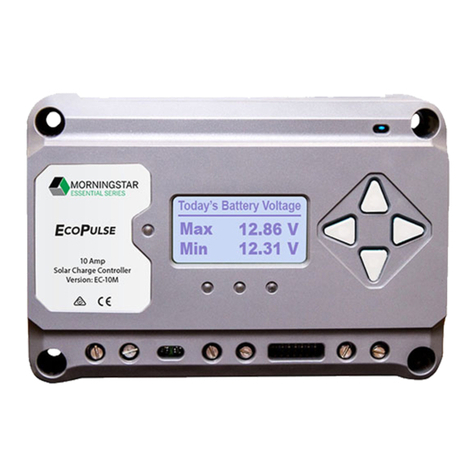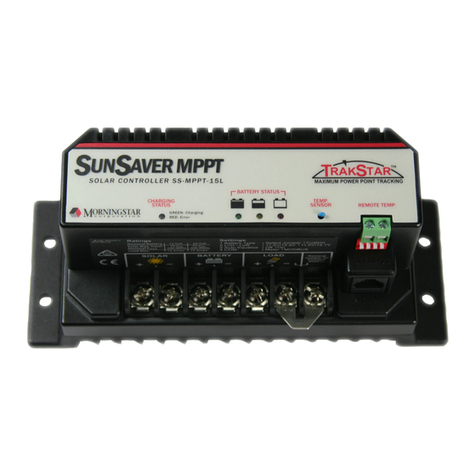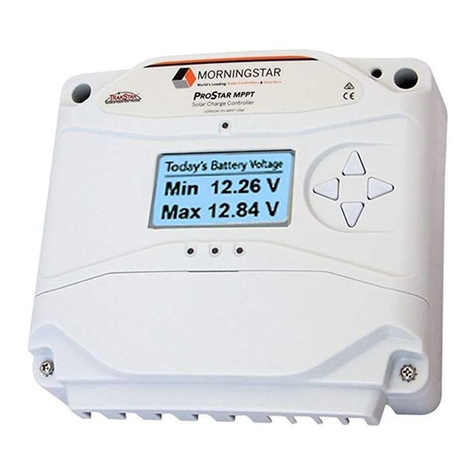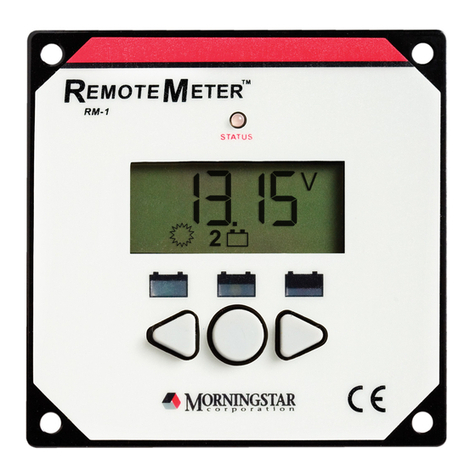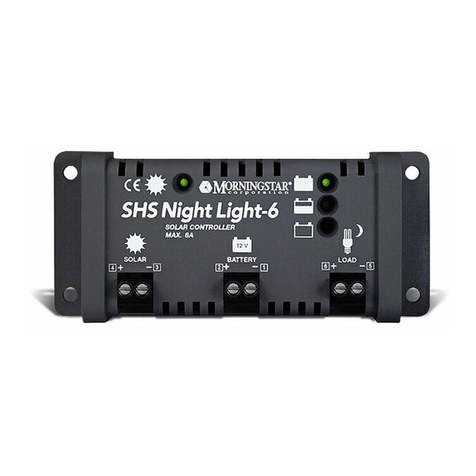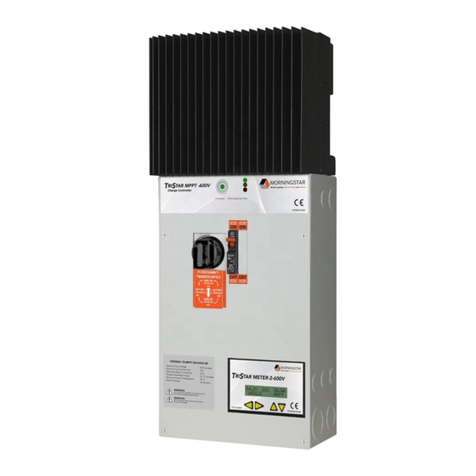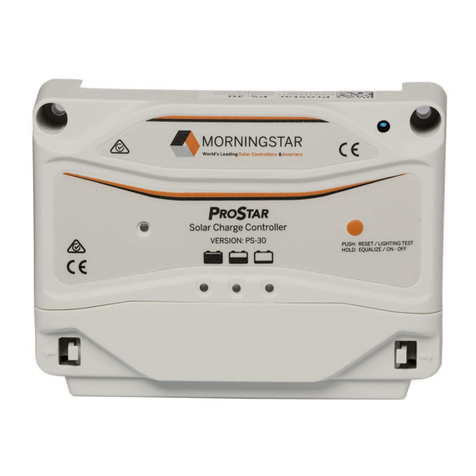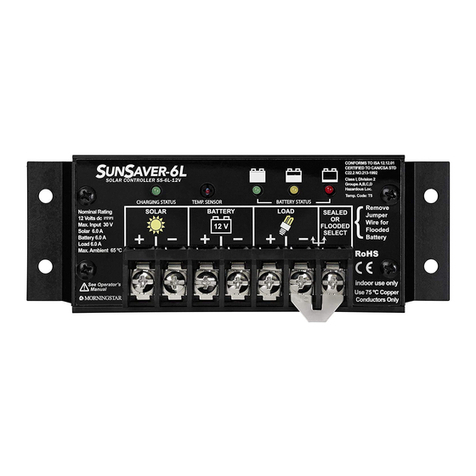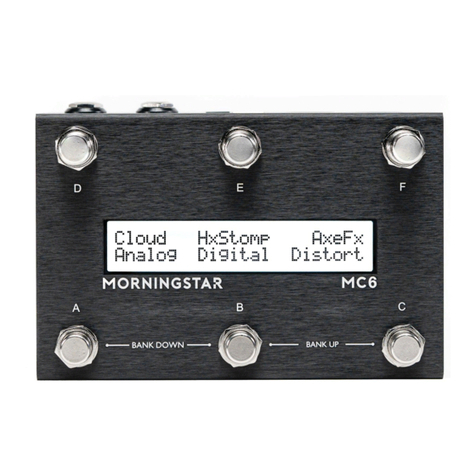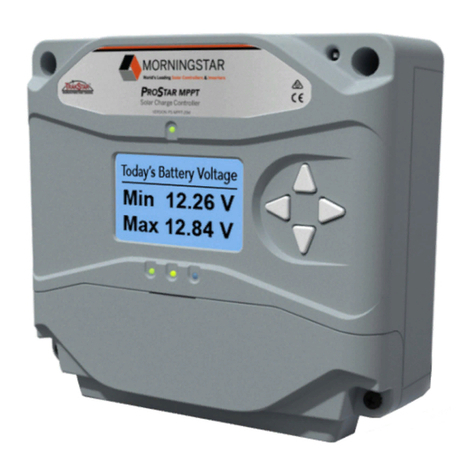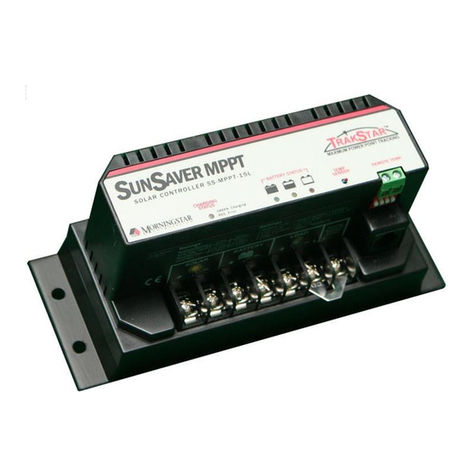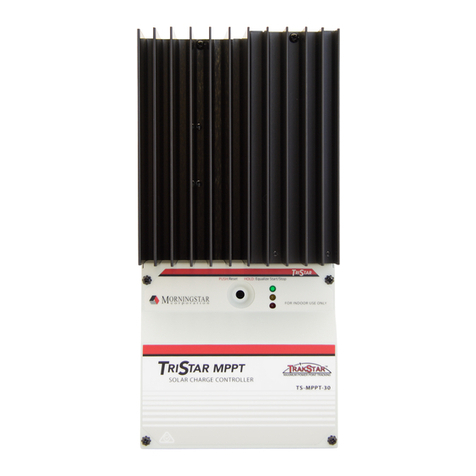
Load
+Bat –
Bat + Load –
RTS
V
Sens
32
TriStar Solar Controller Quick Start Guide
(+)
(–)
(+) (–)
Solar
Disconnect1
(PV GFP required per
NEC 690)
(See the Wiring and
Torque Table on page 4)
Photovoltaic (PV) Array
DC Load
Disconnect1
(See the Wiring and
Torque Table on page 4)
Power UP Sequence:
1. Connect Battery/Battery Bank.
2. Connect Solar or loads.
Power DOWN Sequence:
1. Disconnect Solar or loads.
2. Disconnect Battery/Battery Bank.
Mounting:
Minimum Clearance
Requirements:
CAUTION: Equipment Damage
Do not expose the TriStar CC to weather. Locate in a
dry, protected area to prevent equipment damage.
Ensure the minimum clearance requirements are
followed to provide adequate ventilation and prevent
the unit from overheating.
IMPORTANT: Example only. Actual wiring may vary. READ the TriStar
PWM Installation, Operations, and Maintenance Manual for mandatory
safety requirements. All configuration must comply with local and national
electric codes. Consult your local electric authority to ensure compliance.
See the Morningstar PV String Calculator at:
https://www.morningstarcorp.com/support/
Securing
hardware not
shown.
WARNING: Explosion Hazard
Never install the TriStar in an enclosure with
vented/flooded batteries. Battery fumes are
flammable and will corrode and destroy the TriStar
circuits. Ensure sufficient ventilation.
Battery
(+)
Battery
(—)
1Fuse or breaker sizing must be
based on required wire ampacity.
IF USING A FUSE, DO NOT INSERT THE
FUSE IN THE FUSE-HOLDER UNTIL
AFTER ALL THE OTHER CONNECTIONS
HAVE BEEN COMPLETED.
(+)
(–)
WARNING: Hazardous Voltage
Test between all terminals and ground before
touching.
Power or accessory terminals are NOT electrically
isolated from DC input and may be energized with
hazardous voltage.
(12-volt, 24-volt, or 48-volt)
WARNING:
Hazardous
Voltage
PV (+)
PV (–)
Load (+)
Load (–)
Battery
Disconnect1
(See the Wiring and
Torque Table on page 4)
Communications
Security Lighting
Industrial
Residential
DC Load(s)
The solar PV array can
produce open-circuit
voltages in excess of
125 Vdc when in
sunlight. Verify that
the solar input breaker
or disconnect has been
opened (disconnected)
before installing the
system wires.
1
2
1
2
12
Charge Control
Load Control
(+) (–)
1
2
Diversion Control
Disconnect1
(See the Wiring and
Torque Table on page 4)
Wind Hydro
(+) (–)
Disconnect1
(See the Wiring and
Torque Table on page 4)
3
4
Resistive Load
1
3
2
4
Primary
System
Ground
OR
Voltage
Sense (+)
RTS
(optional)
1/8"
(3 mm)
0.25" (6.4 mm) off wall
[0.25"]
Screw head height for #1 & #2 :
Do NOT exceed 0.50" (12.8 mm)
1 2
TS Meter (Back)
TS Meter
(Front)
IN
(TriStar)
OUT
(Meter)
Optional Accessories
TS-M-2
Remote Meter
(Back)
Remote
Meter
(Front)
TS-RM-2
RJ-11
Cable RJ-11
Cable
WARNING: Hazardous Voltage
Fuses, circuit breakers, and disconnect switches
should never open grounded system conductors.
Only GFDI devices are permitted to disconnect
grounded conductors.
IMPORTANT:
Ensure there is only 1 DC Negative-to-Ground Bond
in the entire system.
LEGEND
Negative (–)
Positive (+)
Ground
6"
(152.4 mm)
Fuse*
Array Voltage should
NEVER exceed the
maximum input voltage.
IMPORTANT:
WARNING: Risk of Fire
If no Remote Temperature Sensor (RTS) is connected,
use the TriStar-PWM within 10 feet (3 m) of the
batteries. Use of the RTS is strongly recommended.
Battery /
Battery Bank
Step 1: Choose mounting location
A) Locate the TriStar on a vertical surface that is protected
from direct sun, high temperatures, and water.
Step 2: Wiring accessibility and air flow clearance
A) Plan and confirm wire routing-access.
B) Verify that there is at least 6" of space above and below the
unit, and at least 3" (75 mm) around the heatsink.
Step 3: Drill holes
A) Place the TriStar template on the wall where the unit will
be mounted.
B) Mark and drill two (2) 1/8" (3.175 mm) holes in the top end
(slot) of each template keyhole.
C) Drive a #10 screw into each drill hole to 0.25" (or 6.4 mm)
from flush with the wall.
Step 4: Secure the controller
A) Place the controller circular keyhole areas over the wall screws,
and pull the unit down to lock the screws into the slots.
B) Use the two remaining screws to fasten the lower part of the
unit to the wall.
6"
(152.4 mm)
ON DIP
12345678
ON DIP
12345678
DIP Switch
Block
(enlarged)
(See Page 5 for
settings)
Voltage
Sense (—)
